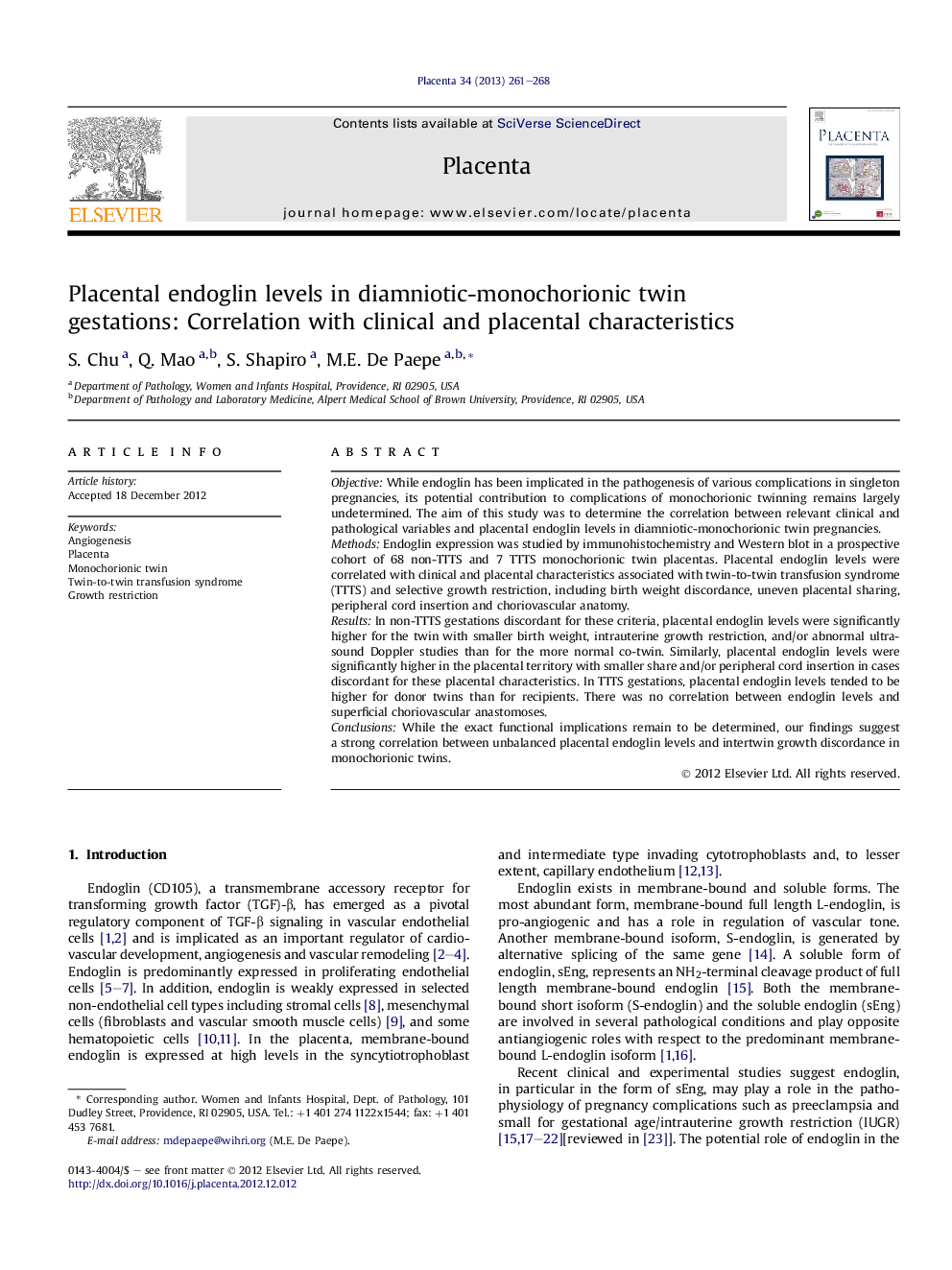| Article ID | Journal | Published Year | Pages | File Type |
|---|---|---|---|---|
| 5895343 | Placenta | 2013 | 8 Pages |
ObjectiveWhile endoglin has been implicated in the pathogenesis of various complications in singleton pregnancies, its potential contribution to complications of monochorionic twinning remains largely undetermined. The aim of this study was to determine the correlation between relevant clinical and pathological variables and placental endoglin levels in diamniotic-monochorionic twin pregnancies.MethodsEndoglin expression was studied by immunohistochemistry and Western blot in a prospective cohort of 68 non-TTTS and 7 TTTS monochorionic twin placentas. Placental endoglin levels were correlated with clinical and placental characteristics associated with twin-to-twin transfusion syndrome (TTTS) and selective growth restriction, including birth weight discordance, uneven placental sharing, peripheral cord insertion and choriovascular anatomy.ResultsIn non-TTTS gestations discordant for these criteria, placental endoglin levels were significantly higher for the twin with smaller birth weight, intrauterine growth restriction, and/or abnormal ultrasound Doppler studies than for the more normal co-twin. Similarly, placental endoglin levels were significantly higher in the placental territory with smaller share and/or peripheral cord insertion in cases discordant for these placental characteristics. In TTTS gestations, placental endoglin levels tended to be higher for donor twins than for recipients. There was no correlation between endoglin levels and superficial choriovascular anastomoses.ConclusionsWhile the exact functional implications remain to be determined, our findings suggest a strong correlation between unbalanced placental endoglin levels and intertwin growth discordance in monochorionic twins.
